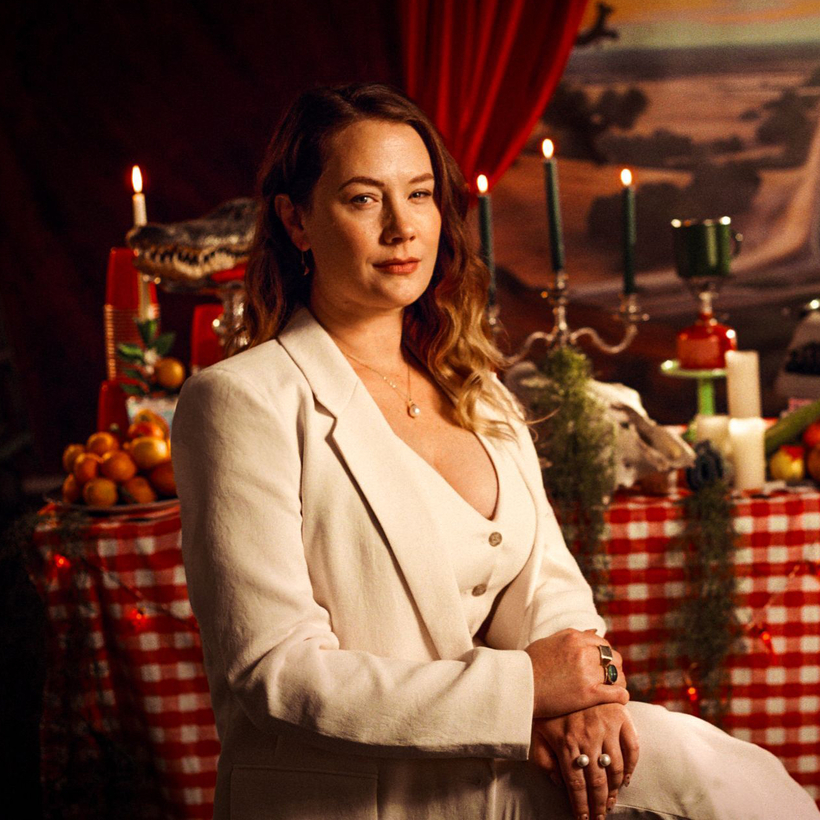E.A. (Elizabeth Anne) Hanks’s literary debut has been a long time coming. After a decade of work, her book, The 10: A Memoir of Family and the Open Road, finally hit the shelves last week. The story is a personal one, weaving between a road trip she took as a teenager with her mother, Susan Dillingham, and one she took alone as an adult, in which she retraced that original journey along Interstate 10. Over months of traveling, she reflects on the alleged abuse she endured from Dillingham and her complicated relationship with her father, the actor Tom Hanks.
E. A. Hanks grew up in Sacramento surrounded by books. Her Anglophile mother loved traditional English literature, filling her house with “huge stacks of Shakespeare and Yeats.”

Her parents met as students at California State University, Sacramento, marrying in 1978, when they were in their early 20s, and separating about a decade later, when Hanks was five and her brother Colin was seven. Her father, who was becoming increasingly well known from roles in Splash and The Man with One Red Shoe, moved to Los Angeles.
Hanks and her brother primarily lived with their mother but visited their father on weekends. At 11, Hanks appeared in Forrest Gump as “the girl on the bus who doesn’t let Forrest sit down.”
Hanks’s relationship with her mother, who she believes was bipolar, grew increasingly strained over time. By the seventh grade, it had become untenable. “She was in a declining state of mental health,” says Hanks. “I moved to live with my father, stepmother, and two younger brothers.

A few months later, as a way to rebuild her relationship, Dillingham announced a spontaneous mother-daughter road trip, to Hanks’s terror. They would go first to Florida and then to Atlanta for the 1996 Olympics. “She said she bought a Winnebago, and then, suddenly, we were driving to the central-Florida town of Palatka.”
“I was terrified of this person,” says Hanks, reflecting on the long days on the road with her mother. “[We were] stuck in a small space at the very lowest point of [our] relationship.”
There were tears, laughter, and heartbreak in the Winnebago. But Hanks never moved back to Sacramento.
In high school, in L.A., Hanks took refuge in writing short stories, which, unlike your typical teenage prose, were read by Nora Ephron. “My dad would send her my English papers extremely earnestly,” Hanks says. (Ephron was a friend of her father’s.)
She moved east in 2000 to study English at Vassar College. Her mother died during her sophomore year, but she never considered going home. “I had absolutely no intention of moving back,” she says. “I also knew that I wanted to work in magazines, and New York was the place to do that.”
Hanks landed a job as an editorial assistant at Vanity Fair after graduating from college—with Ephron’s help. “Nepotism,” Hanks says playfully. “But not through my father.”

Hanks caught the tail end of magazines’ golden age, before the 2008 recession. “I kind of got this very last-gasp look at the town-car expenses,” she says. There was “significant editorial work, but also errands, coffee runs, and runs to Times Square Burger King to sober people up after [Christopher] Hitchens had been in the office.”
Her ability to “face-recognize Leslee Dart” earned her a spot (and a dress budget) working a few starry Vanity Fair Oscar parties. Ephron once again shepherded Hanks on to the next phase of her career, advising, in 2007, that she accept a job as a night editor at the Huffington Post, where she covered politics. She specialized in quick-turnaround pieces on corporate philanthropy. “If Ben & Jerry’s wanted to start a writing program,” she says, “they would call me.”
In 2008, as the presidential race heated up, she was offered a job by Glamour magazine, of all publications, to cover John McCain’s campaign. “I was just in an office being an HTML junkie, and suddenly I am flying to join a presidential campaign.”
After years of conducting 15-minute interviews and churning out copy four hours later, Hanks was burned out. She tried to pivot to writing children’s books, even selling an idea for a series to a publisher—but she never finished it. “I got my big shot and choked hard,” she says. “I thought, Well, I guess that’s it. I’m not a writer. I have no talent.”
Hanks moved back to L.A., gave up writing, and took on odd jobs, including working as a bookstore clerk, pre-school aide, and personal assistant. “I’d get little offers like, ‘Hey, do you want to recap Fear the Walking Dead for The New York Times?’” When asked why she didn’t lean on her last name for higher-profile work, she shrugs. “I guess I was hiding in plain sight.”
She got the idea for The 10 in 2015. At first, it was meant to be a political travelogue tracing ideological divides across the country, but the project gradually turned inward.
Hanks asked her older brother and father for their blessing before she began to write. “It was going to affect them,” she says. “So with their O.K., I went.”
Elena Clavarino is a Senior Editor at Air Mail


